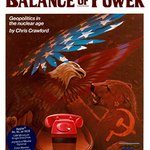Mathematics

Numerical models had a tough decade to start off the 2000s. A field that had shown itself to be both scientific and applied in areas like semiconductor physics was extrapolated out to cultural issues and economics and successfully predicted...nothing.
A new model created by an international research group claims they can now predict which European countries are more likely to become united or which are more likely to break up. It does so by not only considering demographic and economic criteria but also culture and genetics.
What? Europe? No predicting the Arab Spring? No…

A forgotten number system invented in the 19th century may provide the simplest explanation for why our universe could have 10 dimensions.
THERE IS MORE TO IT
Throughout middle school years, the first chapter of the Mathematics textbook was about real numbers. Before they could learn about another number system, some of us bid adieu to Math forever. The rest of us went on to learn, in our last years at school, about complex numbers.
But these are just two of the many possible number systems. Some of the advanced systems were, although discovered a couple of centuries ago, remained just…

You are in a game with one hundred other players. They don't know you, you don't know them, and you can not communicate with any of them. The game is called 'even/odd(s)' and is explained to you as follows:
"You have the choice between two selections: 'even' or 'odd'. The hundred other contestants face the same choice. You all make your choice simultaneously. If the total group of players select an even number of 'evens' and an odd number of 'odds', those who selected 'odd' will receive $3, and those who selected 'even' will receive $4. However, if the result amounts to an odd number of '…

Statistical tests and economic forecasting are something of a joke; Paul Krugman is fun because he rants about Republicans in the New York Times but no one would ever actually let him manage money.
As we have seen in recent times, the description of complex processes are based on a false premise. They assume that the average fluctuation of individual prices and the dependence characteristics between different shares do not change over time. This would make the development of share prices "stationary". This assumption mostly turns out to be wrong in times of crisis, because,…

Once in 737,000 times. That's how frequently happens what I saw yesterday evening, playing poker with my kids.
We were playing with eights and up since we were three, so 28 cards. And Filippo got served off the deck a straight flush. Even waiving the fact that it was a maximum flush (10-J-Q-K-A), there are only 16 such combinations in a 28-card deck, out of 12-some million possible hands.
Small-probability events do happen from time to time, and we usually give too much importance to them. I will most probably never see another straight flush at my table in my life, but maybe one day I'…

Max Tegmark calculated a Really Big Number1 (RBN). It represents the probability of you having an identical Alter Ego (AE) at some other place than where you are now. This distance is so vast, it is many many times beyond your cosmological horizon, and way beyond any causal effect governed by the speed of light. The distance he calculated is 10^10^29m to your nearest AE, resplendent with a supporting environment - namely an identical Earth.
In Tegmark's most basic Level 1 Multiverse1 (L1M), there are infinite copies of your AE spread in all directions. Your AE's live on identical earths…

Complexity theorists have some bad news for people who insist that unless it carries an organic label, food is evil; a group from the New England Complex Systems Institute says they've discovered what will trigger riots around the world in under two years. It's the price of food and when it rises above the threshold they list for instability, social unrest will sweep the planet.
It makes some sense. For as much as we all want to be higher order beings, if our baser needs are not met, a lot of other things no longer take precedence. In India a few years ago, a western…

"A blind use of tail-area probabilities allows the statistician to cheat, by claiming at a suitable point in a sequential experiment that he has a train to catch. This must have been known to Khintchine when he proved in 1924 that, in sequential binomial sampling, a "sigmage" of nearly sqrt(2 log(log n)) is reached infinitely often, with probability 1. (Weaker results had been proved earlier by other mathematicians.) But note that the iterated logarithm increases with fabulous slowness, so that this particular objection to the use of tail-area probabilities is theoretical rather…

The LHC and its lower-energy counterpart in the US, Tevatron, have reported some important Higgs news this past week - details of six searches for the Standard Model Higgs boson at CERN and another in Chicago coming up.
To-date, Higgs searches and announcements have been mostly about exclusions - chopping out swaths where physicists know it cannot be to focus the search on where it can be. Now, in the 140 and 145 gigaelectronvolts (GeV) area, they have reported 'interesting' events. 'Interesting' is science speak for uncertainty, but reason for excitement. In…

In later posts, I want to critique Joy Christian's claim that his counter-example to Bell'sTheorem is “real” (maybe it is, but I suspect not, and will work that out later), but first we have to understand the math he is using. That math is closely related to Quaternions which Doug Sweetser has been busy familiarizing Science 2.0 readers with. So, I will start in the Quaternion “looking glass” and find a way out to the Clifford Algebra CL(3,0) used by Joy Christian in his counter-example to Bell's Theorem.
In my later post where I critique his counter-example, I won't be following step…